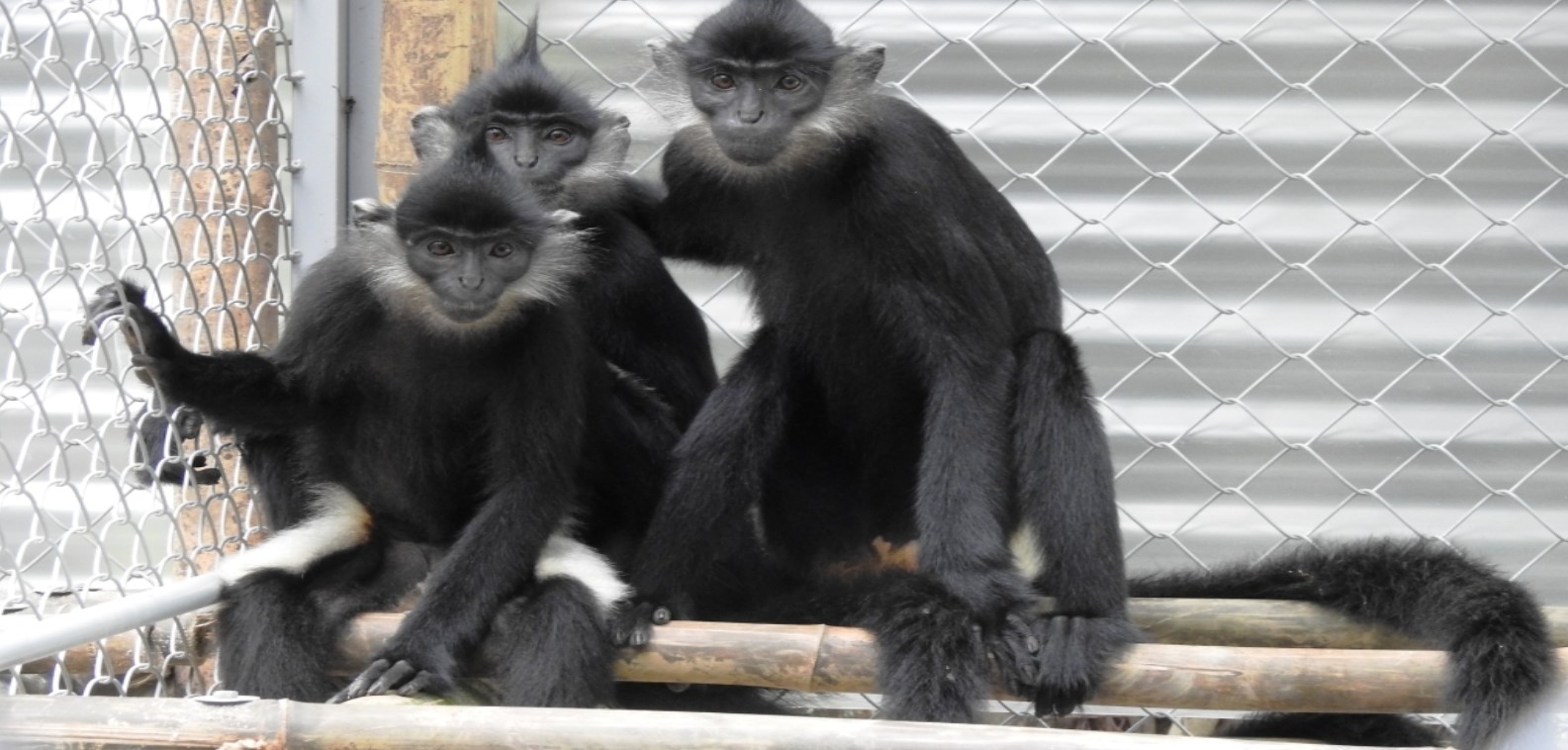QUEEN’S IN CONSERVATION PARTNERSHIP TO PROTECT CRITICALLY ENDANGERED MONKEYS 
10 December 2020
A Queen’s University Belfast academic is part of a collaboration which has enabled the trial re-introduction of a critically endangered species of monkey at a World Heritage Site in northern Vietnam.
Dr Ryan Rabett, a senior lecturer in Human Paleoecology at Queen’s, and his team on the SUNDASIA project contributed resources and expertise to help bring about the release of three captive-born Delacour’s langurs (Trachypithecus delacouri) inside the Tràng An World Heritage Site.
Queen’s, along with Bournemouth University and the Vietnam Academy of Social Sciences partnered with local NGOs, businesses and government on the project, which has immediate and wider implications for biodiversity in the region.
An IUCN Red List species, the Delacour’s langur is endemic to Vietnam. The current population of less than 300 individuals is spread thinly between three to four isolated enclaves in the northwest of the country and in all but one of these areas, the Van Long Nature Reserve, numbers are falling.
In 2015, Tilo Nadler, a primate expert and founder of the Endangered Primate Rescue Center (EPRC) in the Cuc Phong National Park, Ninh Binh, identified Tràng An as the only viable location capable of providing suitable habitat and security to establish an urgently needed new sub-population.
Ahead of the trial release, the SUNDASIA project carried out vegetation surveys of the chosen island site to ensure there would be enough food for the primates and, working with Nadler and the Tràng An Management Board, helped to organise conservation training for staff and an accompanying public exhibition.
Following standard practice at the EPRC, the male and two females selected for the transfer were prepared over a period of months before the August release date.
A few months on from the transfer, early indications are that the animals are adapting well to their new surroundings. They have already become a popular highlight for visitors, who can view them from a distance, to ensure the animals don’t feel threatened. A real mark of success will be if one or both females become pregnant during the trial period.
The project has wider implications though, as Dr Rabett explains:
“While the aim is, first and foremost, to help secure the future of this species, the initiative also has importance for tropical limestone forest biodiversity more generally.
“SUNDASIA’s principal research in Tràng An suggests that the forests here have remained broadly stable for at least the last 20,000 years, despite changes in climate and transformation of the wider landscape – for example, by coastal flooding that peaked around 5,000 years ago.
“Long-term habitat resilience means that this and similar settings may be well-placed to survive the effects of modern climate change. The problem, as our evidence shows, is that they are currently in a depleted, and therefore potentially vulnerable, state; and human action is the likely cause.
“Identifying and where possible redressing that impact is an area where archaeology and palaeoecology can play a really significant role in local conservation and contribute to large-scale programmes, such as the new UN Decade on Ecosystem Restoration."
Media enquiries should be addressed to the Communications Office at Queen’s University Belfast on +44 (0)28 9097 3091.
Photo credit (headline): Bùi Thế Tâm, CC BY-SA 3.0, via Wikimedia Commons
Back to Main News
Top of Page